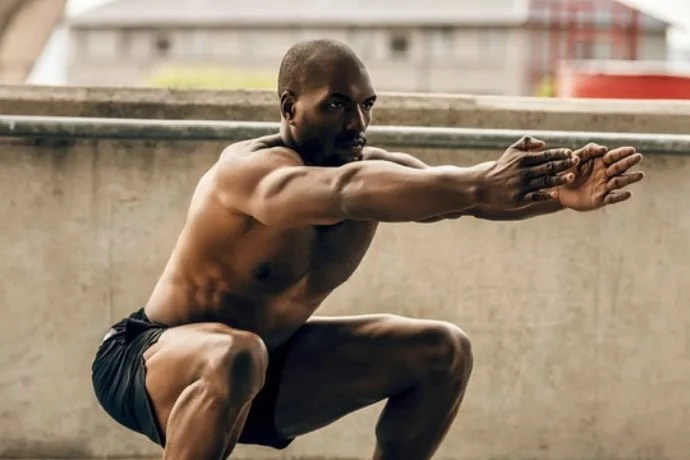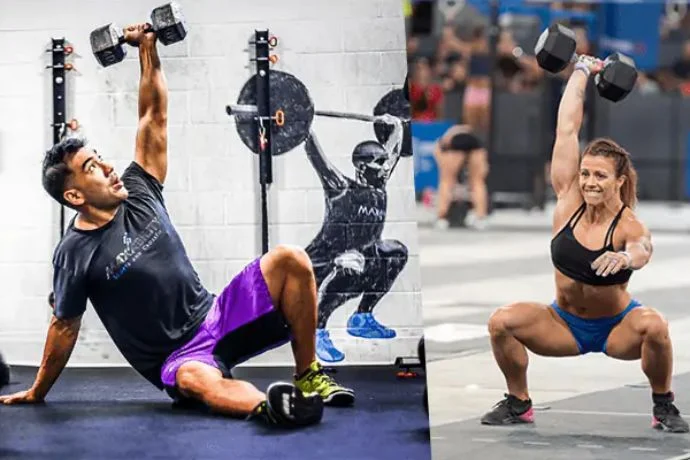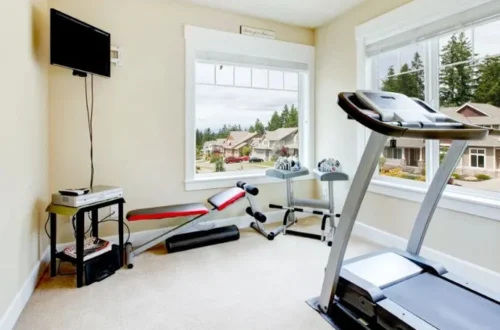When I first went to a CrossFit facility 18 months ago, I thought I understood everything there was to know about fitness. I thought I was in good shape because I had been doing weights for years and had good heart health. After doing three exercises, I could hardly walk up stairs without hurting myself.
That terrible first day of CrossFit taught me something that no amount of time spent in a regular gym could: how important it is to take breaks. I had to stop because I was in so much pain, but it turned out to be the most important thing I learned on my fitness path.
This honest account of my time with CrossFit will help you understand what you’re actually getting into if you’re considering it or just want to know if all the hype is true. I’ll also tell you why making recovery days a priority could be the difference between performing well in CrossFit and quitting after a few months.

What I Expected vs. What I Got
Before my first CrossFit class, I had seen a lot of Instagram videos of athletes accomplishing great things with their power and endurance. I knew the workouts would be demanding, but I thought my fitness background would help me.
My First Reality Check
“Cindy” was the first day. It was a 20-minute workout that included as many rounds as possible of 5 pull-ups, 10 push-ups, and 15 air squats. Isn’t it easy?
I performed 12 rounds and felt good about it until I tried to get out of bed the next day. My body hurt in every way possible. My shoulders hurt so terribly that I couldn’t lift my arms above my head. It felt like my legs were made of concrete.
This wasn’t the usual pain I felt after working out; it was my body telling me I didn’t know how hard this would be.
The Overtraining Trap
I wanted to go back straight away, like most eager beginnings. If one CrossFit session could push me this hard, doing it every day would help me get better faster. This sort of thinking almost prevented me from starting my search.
Even though I was sore, I went to three more classes that first week. On the fifth day, I felt:
- Persistent fatigue that sleep couldn’t fix
- Declining performance in each workout
- Mood swings and irritability
- Minor injuries are starting to crop up
My coach drew me aside and taught me something I had never really grasped before: how important recuperation days are.

Understanding Recovery Days in CrossFit
Taking a day off from work isn’t weak or slow; it’s when your body gets stronger. When you do hard CrossFit exercises, you break down muscle fibers, use up your energy, and put a lot of stress on your nervous system. When you relax, your body heals, changes, and gets healthier.
The Science Behind CrossFit Recovery
CrossFit is quite hard, thus it puts a lot of stress on your body. CrossFit workouts are different from typical strength training since they engage your full body and make your heart rate go up a lot.
This mix causes several sorts of tiredness that need enough time to recover:
- Muscular fatigue from strength components
- Cardiovascular stress from conditioning elements
- Nervous system taxation from complex movements under fatigue
- Joint and connective tissue stress from varied movement patterns
Why CrossFit Demands More Recovery
You might take a break from your muscles a lot when you work out at a regular gym. You can work out your legs on Tuesday and then rest your chest muscles on Monday. CrossFit works out the full body, so every system is pushed to its utmost in every workout.
This is when recovery days that you schedule ahead of time are incredibly crucial. Without them, you’re not allowing your body to finish the adaptation process that makes you stronger and healthier.

My Recovery Day Evolution
It wasn’t easy to learn how to enjoy days off. I felt awful about taking a break when I could be working out. But after keeping track of my workouts for a few months, I learned the truth: my best workouts always happened after I had a decent night’s sleep.
Phase 1: Forced Rest (Months 1-3)
At first, recovery days were just for when something went wrong. I’d take a break because my body couldn’t handle another workout. At this point, I knew the difference between being tired after a workout and really overdoing it.
Warning signs that forced me to take recovery days:
- Performance is declining across multiple workouts
- Feeling tired despite adequate sleep
- Increased susceptibility to minor injuries
- Loss of motivation for workouts I usually enjoyed
Phase 2: Planned Recovery (Months 4-8)
I began to plan recovery days ahead of time instead of waiting for my body to tell me I needed them as I got stronger. This tweak made my CrossFit experience completely different.
I started doing out three days in a row and then taking one day off. This helped me:
- Maintain higher intensity during workout days
- Reduce injury risk significantly
- Actually look forward to challenging workouts
- See consistent improvements in strength and conditioning
Phase 3: Strategic Recovery Programming (Months 9+)
I began to plan recovery days ahead of time instead of waiting for my body to tell me I needed them as I got stronger. This tweak made my CrossFit experience completely different.

Types of Recovery Days That Work
Not every day of recuperation is the same. I found various ways to improve my CrossFit performance through trial and error:
Complete Rest Days
On these days, there is no planned workout. I didn’t want to relax all the way at first since I felt it would make me less fit. The reverse was true: my biggest performance breakthroughs sometimes happened after days of pure relaxation.
When I schedule complete rest:
- After particularly intense workout weeks
- When traveling or dealing with life stress
- At the first sign of overreaching symptoms
- Before testing max lifts or benchmark workouts
Active Recovery Sessions
Active recovery tactics became my favorite way to rest and move at the same time. These sessions help blood flow and movement without putting more stress on training.
My go-to active recovery activities:
- 20-30 minute walks at a conversational pace
- Gentle yoga or stretching sessions
- Light swimming or easy cycling
- Mobility work targeting problem areas
Skill Development Days
Sometimes, recuperation days are more about growing better at what you do than getting in shape. These sessions let me work on my weaknesses without getting weary from intense training.
Skill-focused recovery might include:
- Practicing Olympic lifting technique with light weights
- Working on gymnastic progressions like handstand holds
- Refining movement patterns that need attention
- Breathing and meditation practice

The Performance Benefits I Discovered
Putting recovery days first didn’t slow down my progress; it accelerated it up. I observed changes in my body that I hadn’t seen in years of traditional training within six months of taking recovery seriously.
Strength Gains
My major lifts improved dramatically once I allowed adequate recovery between sessions:
- Deadlift increased from 225 to 315 pounds
- Back squat went from 185 to 275 pounds
- Overhead press improved from 115 to 155 pounds
The important thing was that taking recuperation days at the right times let me lift more weight and do it better during workouts.
Conditioning Improvements
It may sound unusual, but getting more sleep helped my heart health get better faster. Days off from training provided my heart and lungs time to become used to the stress, which resulted to:
- Lower resting heart rate
- Faster recovery between workout intervals
- Ability to maintain higher intensities during conditioning pieces
- Improved performance in longer workouts
Movement Quality
CrossFit recovery times offered me time to work on my mobility problems and movement compensations. This caused:
- Better technique in complex lifts
- Reduced pain during overhead movements
- Improved performance in gymnastic elements
- Greater confidence in varied movement patterns
Common Recovery Day Mistakes
I’ve learned about a few recovery mistakes that slow down growth by making them myself and watching other CrossFitters:
Mistake 1: Guilt-Driven Activity
Many people who do CrossFit feel guilty about taking breaks, so they do other rigorous workouts on their recovery days. While you’re mending, you shouldn’t play basketball, go on lengthy runs, or do extra strength training.
The answer is to remember that relaxing is good for you. Your body is working hard to get better and adjust on recovery days. This work is important, but it’s not clear.
Mistake 2: All-or-Nothing Mentality
A few people believe that recuperation days mean they can do nothing but lie on the couch all day. While full rest is important, modest activity can frequently help you feel better and speed up your recovery.
The answer is to discover the right level of activity that is just right. Most of the time, doing light exercise, stretching, or moving about makes you feel better.
Mistake 3: Ignoring Sleep and Nutrition
Taking a day off from the gym won’t help you get healthier if you’re not sleeping enough or eating adequately. You should pay attention to all elements of repair on recovery days.
On days of recovery, you should make sleep hygiene, drinking water, and eating healthy foods a top priority. These items will change how much you enjoy your day off.
Mistake 4: Inconsistent Recovery Scheduling
Some folks who do CrossFit don’t work out every day. They do it when they want to. You should pay attention to what your body is telling you, but a regular healing regimen usually works better.
Plan recovery days ahead of time, just like you plan exercises. You can adjust things when you need to, but having a plan helps you not train too hard and not get enough rest.
My Current Recovery Strategy
After 18 months of CrossFit, I’ve developed a recovery day approach that keeps me healthy, motivated, and consistently improving:
Weekly Structure
I work out for three days in a row and then take a day off. Every week, this happens. This gives me time to recover and work out five to six days a week.
Typical Week:
- Monday: CrossFit workout
- Tuesday: CrossFit workout
- Wednesday: CrossFit workout
- Thursday: Active recovery or complete rest
- Friday: CrossFit workout
- Saturday: CrossFit workout
- Sunday: Active recovery or skill work
Monthly Periodization
Every four weeks, I plan extra recovery days to help my body adjust more fully and stop me from being too tired:
- Week 1-3: Normal training and recovery schedule
- Week 4: Reduce workout frequency by 20-30% and add extra rest
Seasonal Adjustments
I’ve learnt to change how often I take recuperation days, depending on what’s going on in my life:
- High stress periods: Extra recovery days to prevent overreaching
- Competition prep: More structured recovery with specific timing
- Off-season: Longer recovery periods for deep restoration
The Mental Game of Recovery
The hardest aspect of recovery days isn’t the physical part; it’s the mental element. I had to change the way I thought completely to learn how to relax without feeling bad about it.
Reframing Rest as Training
I now think of recuperation days as a time to work out my parasympathetic nervous system. I work on making my body’s healing processes work better, just like I concentrate on getting my muscles stronger.
This new way of thinking about things helped me get back to CrossFit with the same focus I bring to my workouts.
Building Recovery Habits
I found that recovery days were more enjoyable when I made good routines for them:
- Meditating in the morning or journaling
- I don’t have time to work exercise on days when I make healthy meals.
- Hobbies or reading
- Spending time with friends and family is worth it
- Going to bed earlier than usual
Measuring Recovery Success
I learned to track recovery metrics alongside performance metrics:
- How I feel when I wake up
- How much energy do you have during the day
- Quality sleep and duration
- Getting ready for upcoming workouts
- Overall mood and stress levels
Recovery Strategies That Work
I’ve tried a lot of different active recovery approaches and found a few that help me do better in CrossFit.
Mobility and Movement
Recovery days are ideal for people who have trouble moving around and working out.
- To counter sitting and squatting, Hip flexor stretches
- Thoracic spine flexibility for better overhead positions
- Ankle flexibility work for improved squat depth
- Shoulder blade flexibility for pain-free overhead movements
Stress Management
CrossFit is a physical stress that might be hard to get over if you don’t deal with other stresses in your life:
- Meditation or practice mindfulness
- Spend time with nature instead of spending time on screens.
- build up social connections with friends and family
- Practice hobbies that will help with mental restoration.
Sleep Optimization
Days of recovery are a fantastic opportunity to catch up on sleep and make your sleep patterns better:
- Going to bed earlier without having to wake up early to work out
- Creating better sleep environments for sound sleep
- Adopt relaxation techniques before bed
- Not taking stimulants later in the day
Is CrossFit Worth It? My Honest Assessment
After 18 months, hundreds of workouts, and a lot of days off, here’s what I truly think about CrossFit and if it lives up to the hype:
The Pros
Community and Motivation: The people in the CrossFit community are really helpful. Having coaches and other athletes who understand how important recovery days are will help you stay on track and motivated.
Functional Fitness: CrossFit has helped me get stronger and fitter in real life more than any other workout I’ve ever done.
Time Efficiency: You can get great gains in your fitness in just one hour of working out that includes strength training, cardio, and skill development.
Constant Progression: The fact that CrossFit is quantifiable makes it genuine and motivating.
The Cons
Cost: CrossFit is a type of exercise that is very numbers-based. CrossFit memberships cost a lot, but a lot of individuals think the coaching and camaraderie are worth it. Real progress is inspiring.
Injury Risk: The intensity and complexity of motions do provide an injury risk, especially for beginners who disregard recovery days.
Time Commitment: Individual workouts are effective, but the lifestyle can be all-consuming, including the time required for adequate recovery.
Scalability Challenges: Not all trainers know how to make workouts work for people with different levels of fitness and needs for recovery.
The Verdict
CrossFit is worth it if you:
- Enjoy challenging, varied workouts
- Value community and coaching
- Are willing to prioritize recovery days and injury prevention
- Want measurable fitness improvements
- Can afford the membership costs
CrossFit might not be worth it if you:
- Prefer predictable, routine workouts
- Train primarily for specific sports or goals
- Cannot commit to proper recovery protocols
- Have a history of exercise-related injuries
- Prefer solo training environments
Practical Recovery Day Tips
Here are some useful tips for making recovery days work in your CrossFit journey, based on what I’ve learned:
Plan Recovery in Advance
Organize your recovery days the same way you would organize important meetings. Planning pauses stop you from feeling guilty and tired of making decisions, which can lead to working too much.
Listen to Your Body
You should prepare for recovery, but you should also learn to tell when your body needs extra recovery days that aren’t part of your normal schedule.
Warning signs that demand immediate rest:
- Elevated resting heart rate
- Persistent fatigue despite adequate sleep
- Declining performance over multiple sessions
- Increased irritability or mood changes
- Joint pain or movement restrictions
Create Recovery Rituals
Develop positive associations with recovery days by creating enjoyable rest-day activities:
- Special breakfast you only make on rest days
- Favorite book or TV show reserved for recovery time
- Social activities that don’t involve intense physical activity
- Self-care practices like massage or hot baths
Track Recovery Quality
When you’re recovering, write down how you feel and how those feelings affect how successfully you work out later. You can use this information to find out what you need to get better.
Your CrossFit Journey Starts with Smart Recovery
CrossFit has impacted my life in ways I never thought it would. Yes, I’m stronger and in better shape than I’ve ever been. But more importantly, I’ve learned to pay attention to my body, put rest first, and recognize that recovery days are when the real magic happens.
If you want to practice CrossFit, remember that how hard you work isn’t the only thing that will help you succeed. How well you can relax will also matter. People who do well in CrossFit for a long period are the ones who know how to recover well.

Ready to start your CrossFit journey the smart way?
Here’s your action plan:
- Find a reputable CrossFit gym with experienced coaches who emphasize proper scaling and recovery
- Schedule recovery days from the beginning – don’t wait until you’re overtrained to start resting
- Track your energy and performance to identify your optimal recovery patterns
- Develop active recovery strategies that you actually enjoy
- Be patient with the process – both fitness gains and recovery optimization take time
You can get a lot out of CrossFit, but only if you appreciate both the work and the downtime. Your healing days aren’t things you have to get over; they’re the secret weapon that will make everything else possible.
What is stopping you from making recovery your top priority on your fitness journey? That day off you earned will help you get stronger and healthier.






